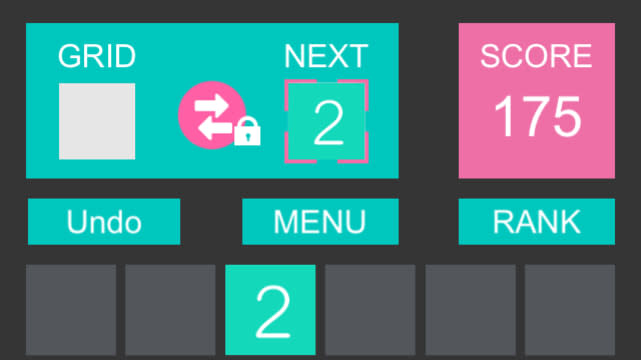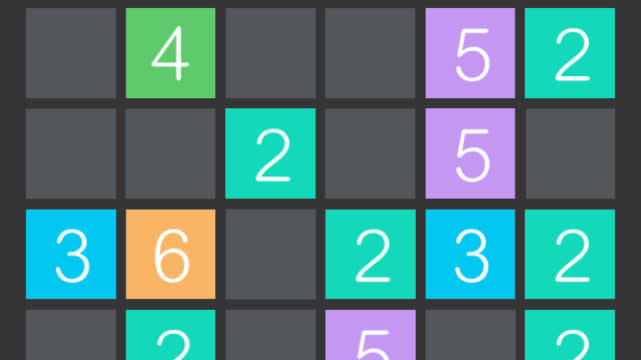Strategy plus math equals Make a 9

About ten years ago, the numerical game Sudoku became an overnight sensation. It required players to fill a series of boxes with the numbers 1-9, with some or most of the boxes empty. Players thrived on strategy, quick wits, and the perseverance needed to stick with the game until the puzzle pieces clicked together. As I played Make a 9, I couldn't help but think of that venerable predecessor, if only for the heavy numerical element of the puzzle. Make a 9 is a just-released game for any iPhone user who likes a mathematical challenge. Requiring iOS 5 or later, this free app is universally available but optimized for iPhone 5.
Although it takes a while to get used to and figure out, the basic thrust of the game is as follows: You are given a blank slate divided into thirty-six squares. Each square mist be filled by a randomly-generated tile, numbered from 1-8. Simply tap any square to place a tile, and move to the next tile. As you arrange three in a row (more if you make L, T, or larger square shapes), the tiles will combine to move to the next highest number.
So, if you place three 2 tiles in a row, they will collapse to become one 3 tile, moving to wherever you placed the last tile (this becomes important later on). Points are scored by the number on each tile, and as tiles combine your points are multiplied by however many tiles were put together (e.g., three 2 tiles are worth six points). The combining and collapsing of the tiles is important because, as the game's title suggests, you are to "make a 9." The goal is to collapse and combine enough tiles to move from a 1 all the way to 9.

My description sounds like this would be easy enough, but it isn't at all. You can't just randomly slap tiles wherever you please. Not if you want to score high points, or even actually get to a 9. The game is over if you fill all the tiles, and this is very easy to do if you are not careful about where you place tiles. More than once, I ended the game with a pitifully low score because my tiles were landlocked-only one or two like tiles with a bunch of random tiles surrounding them. This means no opportunities to merge, change, and most importantly thus clear spaces to drop more tiles (and thus potentially merge more and get more points).
Users can also pay a small fee of US$0.99 to unlock a swapping feature that allows them to swap out one potential numbered tile for another, depending on which is better for current gameplay. The game's current version has banner ads at the bottom of the screen; I did not see a way for them to be turned off.

I never made a 9. I made 8s a good smattering of times, but the game's designers were extremely smart in how they set up the algorithm (or however the tiles are generated). I tried every strategy I could think of: concentrating on one small section of the board, trying to multiply as many tiles as I could in the smallest space. Placing higher tiles far away so I'd have plenty of room to easily merge three or more. Eventually learning to be very choosy in which tiles I filled when, realizing if I picked particular ones I could extend how many tiles were condensed at once and thus get a higher total score and more cleared spaces. None of these ultimately worked.

I'm not sure if this is a good or a bad thing. The app's designers were very clear there isn't a traditional win/lose scenario, and to be honest I'm not entirely sure what would happen if I actually made a 9. Surprisingly, I was never mad at the app, felt like it was impossible, or that my time was wasted. To say I became addicted to it in the space of 48 hours might be a stretch, but I was definitely committed. In my thinking, that is the sign of a quality game with refreshingly attractive design and structure.
iPhone games involving strategy, wit, and investment will only become more popular as our society becomes increasingly mobile. I'm grateful well-made contenders like Make a 9 are at the front of the pack.
